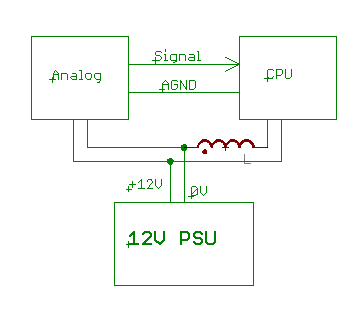- Joined
- Oct 9, 2009
- Messages
- 10,865
- Helped
- 2,065
- Reputation
- 4,130
- Reaction score
- 1,596
- Trophy points
- 1,403
- Location
- Yorkshire, UK
- Activity points
- 57,270
You circuit is all analogue - there is no digital. The point where you would put a split is usually under the ADC with the digital ground on one side and the analogue on the other. However, if you are interfacing to a PLC, all you will have is an analogue ground into the PLC so I don't think you have any choices. I tend to put a small inductor in series with the supplies when designing for sensitive systems (a few uH). You could use a ferrite bead, which you can get in chip form. The one place you won't put one is ground though.
Keith.
Keith.
